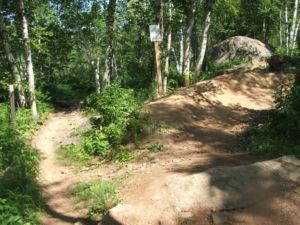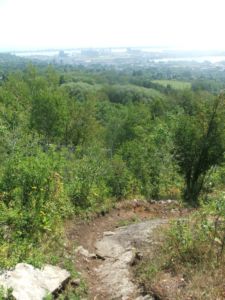Does Popularity of Mountain Biking in Duluth Come at Expense of Environment?
Mountain biking continues to grow in popularity statewide. Duluth, one of the hot spots, markets the city as a national destination with nearly 100 miles of available trails.
A designated “gold level” ride center, the city draws some 60,000 or more mountain bikers annually, according to WDIO-TV.
“That’s a designation from the International Mountain Biking Association,” City of Duluth Parks and Recreation Trails Coordinator Matt Andrews said. “There is only a handful of those in the country, and we happen to be one of those gold level ride centers right here in Duluth.”
But a recent report by John Ramos in the Duluth Monitor questions whether the city has gone all in on mountain biking at the expense of the environment.
Much has been said about the great benefits that mountain biking brings to Duluth. In promoting the activity, however, boosters often fail to account for the environmental impact. The pictures in this article show areas of environmental degradation created by mountain bike trails.

A series of photographs in Ramos’s report depict the wear and tear that tens of thousands of bikers inflict on the trails carved into the city’s hillsides and forests.
The sheer number of mountain bike trails in Duluth has created areas in the woods that are as flattened and impacted as cattle yards, especially at intersections. Whether this is “good” or “bad” depends on one’s perspective, but there is no question that the landscape is changed. Compacted soil increases erosion and prevents new plants from growing. When such areas get wet, the clay that is common in Duluth renders them impassable, muddy messes. Foot and bicycle traffic that attempts to skirt the muck tramples the edges and widens the mud hole further.

All of which raises an uncomfortable question for a city that claims to put the environment first: “Are mountain bike trails sustainable?”
For more than a decade, Duluth has pursued a dream of becoming the mountain biking capital of the Midwest. With nearly a hundred miles of trail now constructed, the job is nearly done. Now may be a good time to step back and consider what we have built.